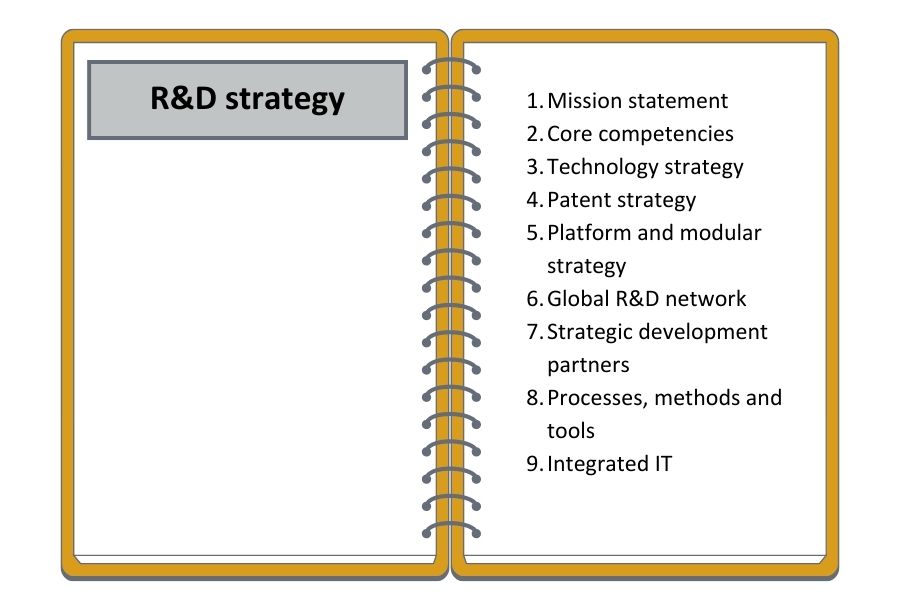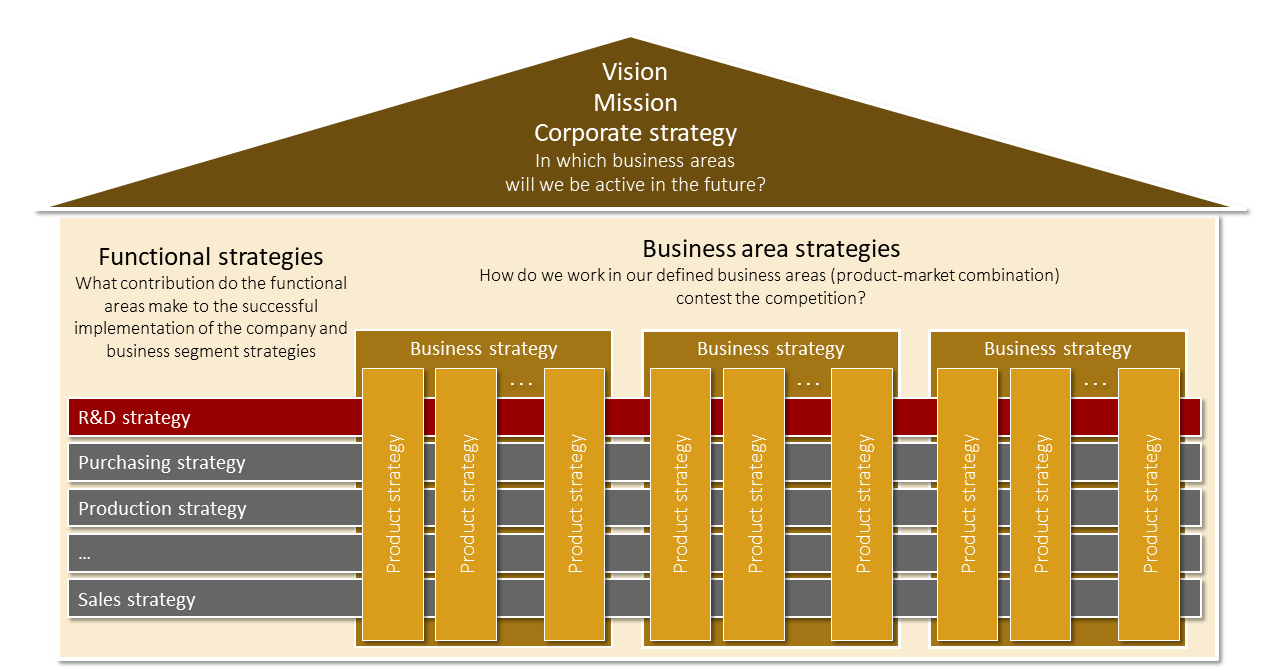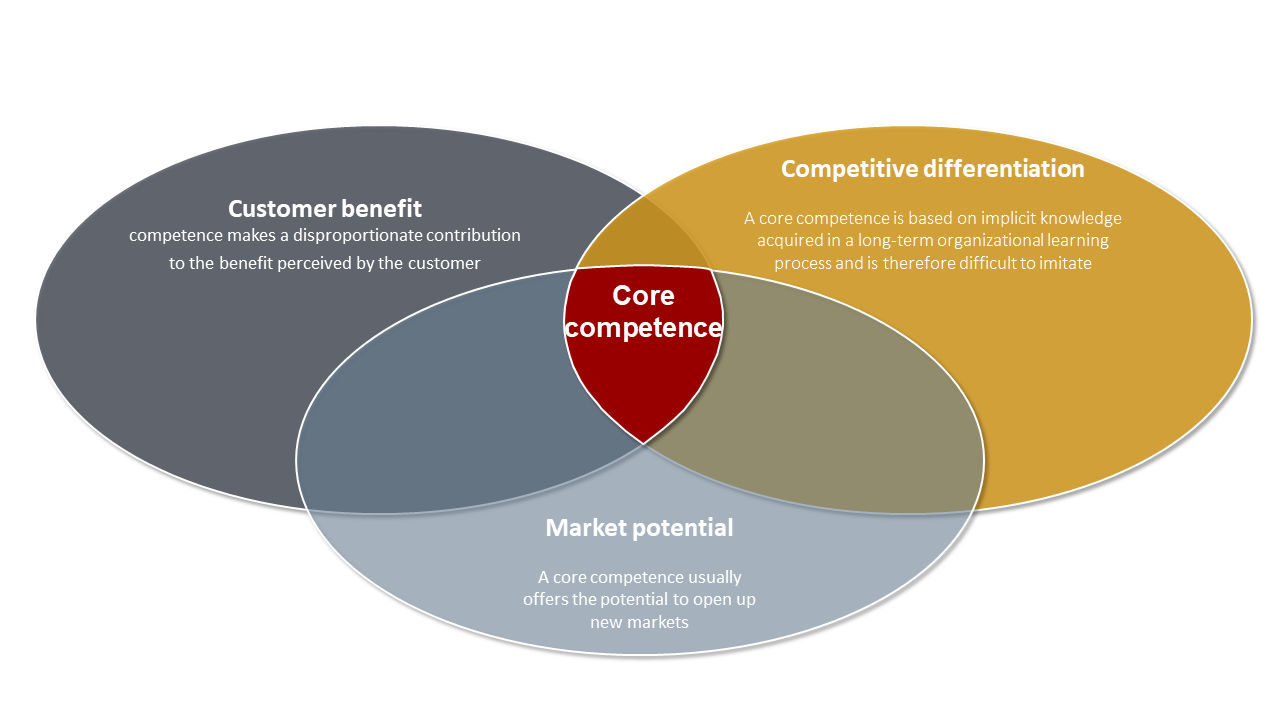R&D strategy
The increasing speed of change and the complexity of the business environment present companies today with completely new challenges and demand a high degree of flexibility and adaptability. Nevertheless, without targeted strategic control, there can be no efficient product development. For those responsible for R&D, a separate functional strategy is, therefore, indispensable. It consistently derives all strategic considerations, describes the contribution of R&D to the successful implementation of the corporate strategy, establishes synchronisation with other organisational units and provides orientation for employees.
Steering product development correctly
As a functional strategy, the R&D strategy is embedded in the company’s strategic foundations. With its description of the core competencies, the technology strategy and the platform and module strategy, it provides important input parameters for the definition of the corporate, business field and product strategies. At the same time, it describes how the R&D department supports the successful implementation of the corporate and business unit strategies with the further development of the organisational structure, the global development network and the process and method landscape. It establishes synchronisation with all other organisational units and provides orientation for employees. This involves determining effectiveness (doing the right things) and efficiency (doing things right), as well as agreeing on guidelines and rules for cooperation.
Therefore, when developing the R&D strategy, let yourself be guided by three essential questions:
- What technologies and product architectures do we want to offer, in order to realise competitive advantages on the product and service side?
- How do we want to organise value creation?
- What organisational structure and processes do we need, in order to achieve maximum performance with the given human and material resources?
Define competitive products
All measures for more efficient product development will come to nothing if your company pursues the wrong strategy and develops products that simply “breeze past the market and customers”. That is why the R&D department has a decisive influence on the company’s strategy. Especially because it provides crucial core competencies and is responsible for the company’s technology strategy. In this way, the R&D department can provide decisive impulses for a technology push, in addition to the market pull perspective contributed by product management.
In addition, those responsible for R&D have a second central lever at their disposal: The platform and module strategy. With this strategy, you make another decisive contribution to increasing the competitiveness of the company. You increase the possible product variance, i.e. the choice for the customer. At the same time, you reduce development and manufacturing costs and also shorten the development time for variants.
With both strategies, the R&D department makes a significant contribution to increasing the effectiveness of the resources used. We help you organise your processes and methods for technology scouting and define your technology strategy, platform strategy and module strategy. In addition, you will derive roadmaps and synchronise these processes with the other strategy processes in the company.
Defining your own value creation
You have successfully started the strategy work with a view to customer needs and the competitive situation. Products, technologies and product architectures have been defined. Now you still need adequate strategic management to render the whole thing operational. We support you in developing one or more of the necessary elements and complete your R&D strategy.
Identify core competencies
Knowing your core competencies is crucial to secure (or expand) your current competitive position and to support strategy development from the inside out. Especially in the face of rapidly changing conditions, new business areas and products can be found and defined quickly. True core competencies are rare. They are characterised by three features.
Determine your own proportional development share
Once you have defined your own core competencies, it is already clear which proportional development shares you should keep and expand in your own company. For all other development tasks, alternatives must be considered. In the first step, you determine for which product components you want to carry out development tasks at all, and for which you do not. In the second step, you determine the optimal development depth, e.g. along the V-model. Perhaps it is right to have only one system competence in your own company. Perhaps, for strategic and economic reasons, it is also better to carry out the detailed design and verification yourself. We help you to define the right development breadth and depth.
Strategic development partners
You have defined your in-house proportional development shares and are focusing on the success-critical strengths of your R&D. Now determine with which strategic development partners: system suppliers, component suppliers and development service providers you want to work with in the long-term.
Establish efficient processes and structures
Organisational structure and [global development network](/en/performance-improvement-rundd/shaping-the-organisation/global-development-network.html)
Your core competencies, in-house proportional development shares, technology, platform and module strategy are defined. This has a direct impact on the required personnel competencies, your infrastructure, the organisational structure and the global development network. Determine how you want to bundle or distribute your competencies worldwide and how you will manage this network. In doing so, you will be guided by other criteria such as: competence, customer proximity, production proximity, location costs, etc. You must ensure that your global development network develops in a strategically planned and controlled way.
Processes, methods, IT
All previous decisions have an influence on your process landscape, the supporting methods and tools. Which product creation process do you need? Which development processes and methods? Which process derivatives make sense at the locations? How do your organisational units work together? Make sure you set the right course for optimising your process landscape.
The benefit to you
- You derive all strategic considerations consistently and within context.
- You focus on competition-relevant development content and optimise your cost structures.
- You are coordinated with all other corporate divisions.
- You provide your employees with key orientation in their daily work.
- With the strategic development of your organisation and process landscape, you make a decisive contribution to the operationalisation of all other strategies.



